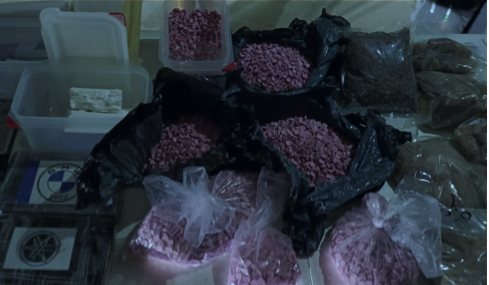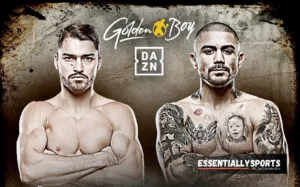
What’s ‘Tusi’ and what is ‘Tusi Lavada’?
At some point in the 1970’s, the same creator of the MDMA formula, a biochemist named Alexander Shulgin, created a whole class of drugs for chemically driven therapy called ‘2C-B’ drugs, that provided a range of chemically precise doses of euphoria and hallucinations. These drugs inspired variants, copy cats and bootlegged artisanal versions made by individuals who really had no business creating edible food, let alone a brain stimulant that required some formal chemistry training.
Ultimately, the main compound that unifies these drugs is called ‘Phenethylamine’. This chemical compound impacts the central nervous system. The stimulant is found in mushrooms and plants naturally, and is produced in humans too for normal functioning. The compound is found to spike whenever an individual engages in cardiovascular exercise. For reference, individuals diagnosed with ADHD possess low amounts of phenethylamine compounds in their blood stream, which ADHD treatment drugs balance out. The point is that the chemically precise version of this compound possesses a wide range of related varieties as well as a predictable impact on the brain.
While the pure version of 2CB doses is merely questionable, the lofty intension of the drug was for some kind of experimental introspection among adult individuals. Ultimately, the chemists who produce for this purpose are being cavalier with their health and naive about the market implications. Today, the drug is not used for high minded experimentation, but more recreationally in a club or youth oriented festivity.
The borrowing of the term ‘2C’ eventually led to its street variants in Latin America being called ‘Tusi’.
From Labs to Street Chemistry
The modern history of Tusi begins in European nightclubs. These club goers were consuming the compound derivative designed by Shulgin. Afterwards, travellers from Colombia picked up on the trend, smuggling out both the know-how and ready made product for other well to do buyers. Much like individuals who smuggle out edibles made in California to areas where marijuana legalisation has not permitted for controlled THC doses, these Colombian travellers simply wanted to experience the controlled high at home.
By 2007, the artesian version of the drug was made in Colombia and at scale by independent smugglers – ruffians with upper middle class connections. That year marks the first spike in overdoses (without mortalities) and both authorities and established cartels took note.
By 2013, six years after the first spike in Tusi use within Medellin, Colombia, the remnants of Pablo Escobar’s enforcement arm contained a cell of groups in charge of Tusi’s distribution. The “La Oficina” affiliated cells began to provide their version of Tusi as part of their overall suite of recreational drugs, like cocaine and marijuana.
Eventually, competing factions were able to hire chemists to recreate a version of the original 2CB drug in Cali. As versions of the compound proliferated, the quality dropped, and so did the price. Instead of a chalky paste, they concocted this faithful version of 2CB as “pink cocaine”, adding a colorant for snorting ease. Today, drug. producers or resellers are also known to add a strawberry flavour. Probably what this song is referencing:
Eventually, though, the actual expense and knowhow of producing 2CB created prohibitive operating costs. Instead, a mix of ketamine (horse tranquilliser) and mashed MDMA pills with the same pink colorant were made as a “hood” replacement in Colombian neighborhoods. Like Fentanyl, a steady supply of cheap pharmacological stimulants and depressants are available from drug labs in Cambodia, Vietnam and China. Ketamine production is part of that supply chain.
In Europe, the cheap version of the Pink Cocaine recipe is Ketamine, caffeine (presumably, to replace Cocaine) and MDMA so as to simulate the euphoric aspect of the class of drugs 2CB belongs to today. This was a cheaper alternative than recreating some chemical compound akin to LSD in terms of difficulty in execution and purity demands.
Like any product that falls into the hands of the commodization process of a hardcore capitalist, the 2CB’s drug is a tempting new frontier. Due to its illicit nature, 2CB is not being trademarked for brand use, which causes lots of confusion since ‘Tusi’ and the 2CB are entirely different. The term ‘Tusi’ has carved out an attractive niche that is hard for traffickers to ignore when they’re looking for profit.
The Future
Most recreational drug users and producers have known about pink cocaine since the mid 2000’s. While the preferred compound remains the actual 2CB, the trial by error approach so often employed in this space has concluded that an acceptable alternative is a concoction of Ketamine, Caffeine and MDMA, all of which individually can be quite detrimentable when abused, but in combination provoke a sensory overload to the Central Nervous System.
During the pandemic, the lack of transnational shipments likely disrupted and even fragmented some illicit drug markets. Nightlife and tourism are the cloak under which even legal drug use is promoted. With both of those stalled, alternatives like Tusi may have remained attractive as purity demands are lower and the capital inputs for the drug were less prohibitive. Colombia has long been at the vanguard of new production and consumption patterns for the region and world. In recent years, Mexico based organizations have consolidated the profits and logistics of trafficking but have increasingly looked to pink cocaine as a homegrown alternative.
A UN report citing data from 2019 and released during the peak of the Pandemic highlighted the active desire for traffickers to synthetically recreate as many drugs possible in compounds. Thus, those market dynamics appear to be noticeable even to the highest authorities.
Marketing
If the rumors circulated in interview assertions from el ‘Mini Lic’ are true – that the talented artist Peso Pluma is connected to the Cartel de Sinaloa -, then the likelihood of some of his music including clever marketing seems likely. Like portraits in the days of old commissioned by wealthy aristocrats, the use of famous Mexican singers for broadcasting an auto biography or new business intentions from a drug trafficker is common even standard.
In one of his more popular (and catchy) songs, “Lady Gaga”, Peso Pluma opens with the chorus as
Dom Perignon Lady Gaga, lentes en la cara
Lady Gaga by Peso Pluma
Tusi lavada
Triple lavada …
With the recent announcement by the Chapitos and other groups in CDS that all Fentanyl production will stop, the strategic pivot into drugs that draw less of the US ire seems a key motivation to fully devote themselves into ‘Pink Cocaine’. Otherwise, the consequences of their business model figuring as an electoral topic increase. Thus, Pink Cocaine, a boutique drug long on the shelf may just now be reinvigorated by both economic and political concerns for Mexico’s drug trafficking organisations.







